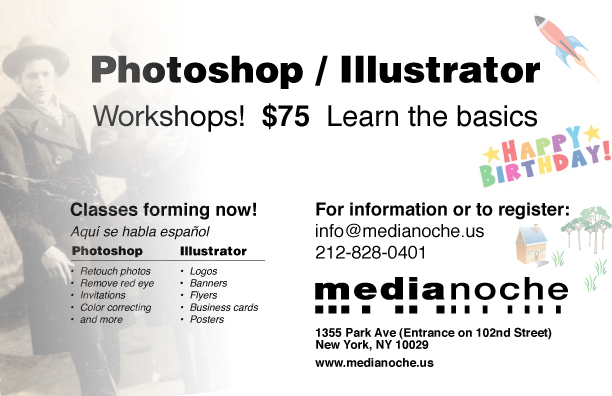December 16, 2010
Honorable Eric H. Holder, Jr. Attorney General of the United States
The United States Department of Justice
950 Pennsylvania Avenue, NW Washington, DC 20530-0001
Dear Mr. Holder:
As Puerto Rican scholars teaching in the United States we have decided to write to you in order to express our deep concern with regard to recent developments at the University of Puerto Rico (UPR). For the past months, the University has experienced a continuing conflict that began last semester with a call for a strike by the students in response to an increase in academic tuition and related to fears about the future of public higher education on the island. Unfortunately, university administrators, professors, and students have not been able to negotiate a satisfactory agreement. The whole process has recently culminated in the intervention of Governor Luis Fortuño and the deployment of a massive police presence on the main university campus at RÃo Piedras and on other campuses in the system, including a private security contractor and fully armed SWAT units.
On December 13, Chancellor Ana R. Guadalupe banned all meetings, festivals, manifestations, and all other so-called large activities on the RÃo Piedras campus for a period of thirty days. In our view, this represents a clear breach of fundamental constitutional rights. The justifications given by the Chancellor are that this measure is required in order to keep the campus open and to return it to normal operations. Furthermore, professors and workers are being asked (under the threat of punishment) to continue working despite the intense volatility caused by the police presence on campus.
We remain very concerned that such use of force may in fact increase the potential for violence and continued tension, especially if the guarantees of freedom of speech, association, and assembly have been revoked. Both the United States Constitution and the Constitution of the Commonwealth of Puerto Rico guarantee these rights. Moreover, this week the Supreme Court of Puerto Rico (which, without the opportunity for serious public debate, was recently restructured by the government of Luis Fortuño in order to ensure a clear majority of judges in his favor) declared, in a disturbing resolution, that strikes will be prohibited at all UPR campuses effective immediately.
We the undersigned write to you as scholars and citizens because of the potentially lethal conditions that we have described and that prevail at the UPR. That is why we urge you to intervene in order to:
1. Guarantee the constitutional rights of freedom of speech, association, and assembly as stipulated by both constitutions and to see that the conflict is conducted under the strictest observation of human and civil rights for all parties involved.
2. Procure the immediate withdrawal of all state and city police, private contractors, and other non-UPR security personnel from the University of Puerto Rico system currently under occupation.
3. Call all parties to meet and have a truly productive dialogue.
Respectfully yours,
[Institutional affiliations for identification purposes only. Please respond to primary contacts.]
1) Agnes Lugo-Ortiz, The University of Chicago [Primary contact] lugortiz@uchicago.edu
2) Ivette N. Hernández-Torres, University of California, Irvine [Primary contact] ivetteh@uci.edu
3) Luis F. Avilés, University of California, Irvine [Primary contact] laviles9631@sbcglobal.net
4) Aldo Lauria-Santiago, Rutgers University [Primary contact] alauria@rci.rutgers.edu
5) Arcadio DÃaz-Quiñones Emory L. Ford Professor, Emeritus, Princeton University adiaz@princeton.edu
6) AnÃbal González-Pérez, Yale University anibal.gonzalez@yale.edu
7) Luis Figueroa-MartÃnez, Trinity College Treasurer, Puerto Rican Studies Association (PRSA) Luis.Figueroa@trincoll.edu
8) Roberto Alejandro, University of Massachusetts, Amherst ralejand@polsci.umass.edu
9) Harry Vélez-Quiñones, University of Puget Sound velez@pugetsound.edu
10) Ismael GarcÃa-Colón, College of Staten Island, CUNY Ismael.Garcia@csi.cuny.edu
11) Ãurea MarÃa Sotomayor-Miletti, University of Pittsburgh aureamariastmr@yahoo.com
12) Antonio Lauria-Perricelli, New York University al71@nyu.edu
13) Wanda Rivera Rivera, University of Massachusetts, Boston Wanda.Rivera-Rivera@umb.edu
14) José Quiroga, Emory University jquirog@emory.edu
15) Lawrence La Fountain-Stokes, University of Michigan, Ann Arbor lawrlafo@yahoo.co.uk
16) Daniel Torres, Ohio University torres@ohio.edu
17) Pablo Delano, Trinity College Pablo.Delano@trincoll.edu
18) Denise Galarza Sepúlveda, Lafayette College
galarzad@lafayette.edu
19) Richard Rosa, Duke University rr49@duke.edu
20) Eleuterio Santiago-DÃaz, University of New Mexico esantia@unm.edu
21) Ilia RodrÃguez, University of New Mexico ilia@unm.edu
22) Ramón H. Rivera-Servera, Northwestern University r-rivera-servera@northwestern.edu
23) Gladys M. Jiménez-Muñoz, Binghamton University-SUNY gjimenez@binghamton.edu
24) Luz-MarÃa Umpierre Poet, Scholar, Human Rights Advocate LUmpierre@aol.com
25) Sheila Candelario, Fairfield University candelariosheila@hotmail.com
26) Edna Acosta-Belén, University at Albany, SUNY eab@albany.edu
27) EfraÃn Barradas, University of Florida at Gainsville barradas@LATAM.UFL.EDU
28) Kelvin Santiago-Valles, Binghamton University-SUNY stgokel@binghamton.edu
29) VÃctor Figueroa, Wayne State University an7664@wayne.edu
30) Juan Duchesne Winter, University of Pittsburgh juanduchesne@yahoo.com
31) Pablo A. Llerandi-Román, Grand Valley State University llerandp@gvsu.edu
32) Irmary Reyes-Santos, University of Oregon irmary@uoregon.edu
33) Arnaldo Cruz-Malavé, Fordham University cruzmalave@fordham.edu
34) Ileana M. RodrÃguez-Silva, University of Washington imrodrig@uw.edu
35) César A. Salgado, University of Texas, Austin cslgd@mail.utexas.edu
36) Jossianna Arroyo, University of Texas, Austin jarroyo@mail.utexas.edu
37) Francisco A. Scarano, University of Wisconsin, Madison fscarano@wisc.edu
38) Jaime RodrÃguez Matos, University of Michigan, Ann Arbor jaimerod@umich.edu
39) Cecilia Enjuto Rangel, University of Oregon enjuto@uoregon.edu
40) Elpidio Laguna-DÃaz, Rutgers, the State University of New Jersey elplag@optonline.net
41) Lena Burgos-Lafuente, SUNY, Stony Brook lenabu@nyu.edu
42) Ramón Grosfoguel, University of California, Berkeley grosfogu@berkeley.edu
43) José Francisco Buscaglia Salgado, SUNY, Buffalo Director of Program in Caribbean Studies jfb2@buffalo.edu
44) Francisco Cabanillas, Bowling Green State University fcabani@bgsu.edu
45) Lisa Sánchez González, University of Connecticut lisa.m.sanchez@uconn.edu
46) MarÃa M. Carrión, Emory University mcarrio@emory.edu
47) Yolanda MartÃnez-San Miguel, Rutgers, the State University of New Jersey Director Institute for Research on Women yolandatrabajo@optonline.net
48) AgustÃn Lao-Montes, University of Massachusetts, Amherst oxunelegua@yahoo.com
49) Jason Cortés, Rutgers University-Newark jasoncor@andromeda.rutgers.edu
50) Nelson Maldonado-Torres, Rutgers University President, Caribbean Philosophical Association nmtorres7@gmail.com
51) DaÃn Borges, The University of Chicago dborges@uchicago.edu
52) Edna RodrÃguez-Mangual, Hamilton College emrodrig@hamilton.edu
53) Ricardo Pérez Figueroa, Eastern Connecticut State University PerezR@easternct.edu
54) Licia Fiol-Matta, Lehman College, CUNY lfiolmatta@earthlink.net
55) Frances R. Aparicio, University of Illinois at Chicago franapar@uic.edu
56) Luis E. Zayas, Arizona State University lezayas@asu.edu
57) Hortensia R. Morell, Temple University hmorell@temple.edu
58) Milagros Denis-Rosario, Hunter College mdenis@hunter.cuny.edu
59) VÃctor RodrÃguez, California State University, Long Beach vrodrig5@csulb.edu
60) Madeline Troche-RodrÃguez, City Colleges of Chicago mtroche05@yahoo.com
61) Carmen R. Lugo-Lugo, Washington State University clugo@wsu.edu
62) Jorge Luis Castillo, University of California, Santa Barbara castillo@spanport.ucsb.edu
63) Rosa Elena Carrasquillo, College of the Holy Cross rcarrasq@holycross.edu
64) Juan Carlos RodrÃguez, The Georgia Institute of Technology juan.rodriguez@modlangs.gatech.edu
65) Susana Peña, Bowling Green State University susanap@bgsu.edu
66) José R. Cartagena-Calderón, Pomona College Jose.Cartagena@pomona.edu
67) AmÃlcar Challu, Bowling Green State University achallu@bgsu.edu
68) Carlos J. Alonso, Columbia University calonso@columbia.edu
69) Carmen A. Rolón, Providence College CROLON@providence.edu
70) Amy Robinson, Bowling Green State University arobins@bgsu.edu
71) Consuelo Arias, Nassau Community College ecarias@att.net
Puerto Rican Scholars in Canada Who Also Subscribe to this Letter
72) Rubén A. Gaztambide-Fernández, University of Toronto rgaztambide@oise.utoronto.ca
73) Néstor E. RodrÃguez, University of Toronto nestor.rodriguez@utoronto.ca
74) Gustavo J. Bobonis, University of Toronto gustavo.bobonis@utoronto.ca
cc: Thomas E. Pérez, Assistant Attorney General, United States Department of Justice Civil Rights Division
Luis Gutiérrez, Congressman, Illinois 4th District
Nydia Velázquez, Congresswoman, New York 12th District
José Serrano, Congressman, New York 16th District American Civil Liberties Union (ACLU)
Luis Fortuño, Governor of the Commonwealth of Puerto Rico
Pedro Pierluisi, Puerto Rico’s Resident Commissioner in Washington
José Ramón de la Torre, President of the University of Puerto Rico
Ygrà Rivera de MartÃnez, President of the Board of Trustees (Junta de SÃndicos), University of Puerto Rico
Ana R. Guadalupe, Chancellor of the University of Puerto Rico, RÃo Piedras Campus

